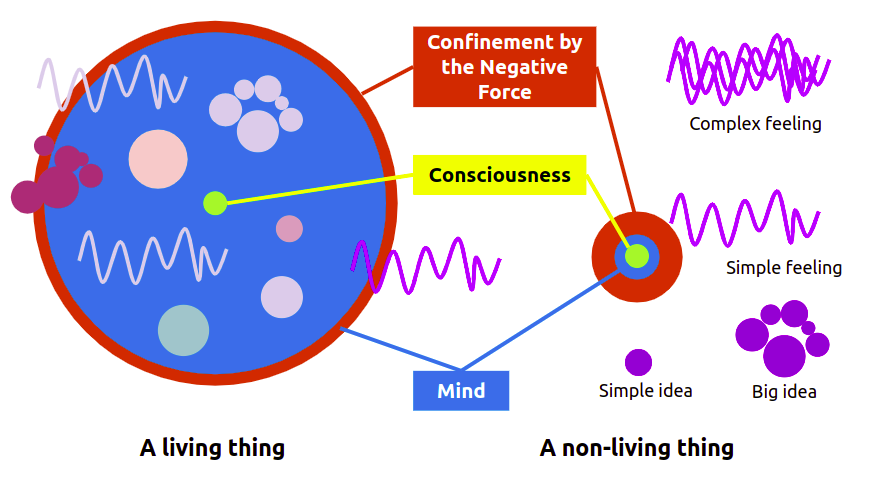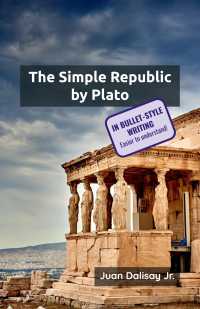Life and The Nature of Mind
December 10, 2020 4 minutes • 714 words
Table of contents
“Then,” you ask, “do you mean to tell us that THE ALL is LIFE and MIND?”
Yes! and No! is our answer.
Chapter 2 explained that ideas and feelings are subdivisions of the experience of the experiencer:
- experiencer
- experience
- feelings
- ideas
Experiences are then powered by 2 Forces:
- The Negative Force leads to experiences
- The Positive leads to the understanding of those experiences
But what about the experiencer or the mind that experiences those ideas and feelings?
For the experiencer to actually experience the infinite combination of ideas and feelings, it needs a container for them. This metaphysical container or arena is called a mind which is designed to hold and process its own ideas and feelings, which are collectively called ‘perceptions’.
Thus, an experiencer has 2 parts:
- mind as the container for experiences
- consciousness as the perceiver of that container

Metaphysical Mind, Physical Mind
Our system splits reality into a metaphysical domain and a physical domain. This leads to every mind having 2 parts in terms of structure:
- A metaphysical mind
This is the mind that occupies the metaphysical domain, and is called the soul. Philosophers call this the higher mind, spiritual mind, or subjective mind.
- A physical mind
This is the mind that occupies the physical domain. This is what scientists believe in. Philosophers call this the lower mind, crude mind, or objective mind.
Life and the Living Universe
In terms of activity, physical minds are then classified into two:
- A physical mind that can do its own actions or expressions is called a ’living thing’ by humans
- A physical mind that cannot express nor act is called a ’non-living thing'

‘Life’ therefore is the state of a mind being independently expressive within a physical body.
A metal rod reacts to heat by turning red, as its means of expression. But we do not regard it as alive because its expressiveness is not independent of the Nature around it. This manifests as its identity not having its own willpower. Its destiny is totally dependent on its surrounding environment.
This means that even though the metal rod is not alive, the physical universe, which it is a part of, is the one that is alive. The physical events inside the universe depend on chance. This chance is really the will of the physical universe being perceived by living entities such as bacteria, plants and animals.
This living universe is the subject of study of Material Superphysics just as the Supreme Entity is the subject of Superphysics, and the Absolute Entity is the subject of Metaphysics.
If the physical universe were one living body, then the metal rod mentioned above is just one of its tiny body parts that seem non-living from our limited point of view.
Thus, the living nature of the physical universe is seen in:
- the reaction of chemicals
- the expansion and contraction of matter
- the fact that material things do not go through each other
- etc.
A dead universe will have no heat, no change, no evolution.
We therefore can regard the living things that we see as living things within the living physical universe.
Viruses are in the in-between state between living and non-living. They are minds that are independently expressive with their RNA or DNA as their gravitational signature. But they require other physical bodies for that expression.
The Supreme Entity and the Absolute Entity
Our metaphysical souls inhabit our physical bodies just as the metaphysical Supreme Being inhabits this living physical universe. It is this integration of the Supreme and the physical that we call ‘Mother Nature’ or ‘God’.

The physical universe is therefore the most obvious means of Its expression just as we are less obvious and more complicated ones.
The question ‘Does God exist?’ can be answered by ‘Can you perceive Existence?’.






